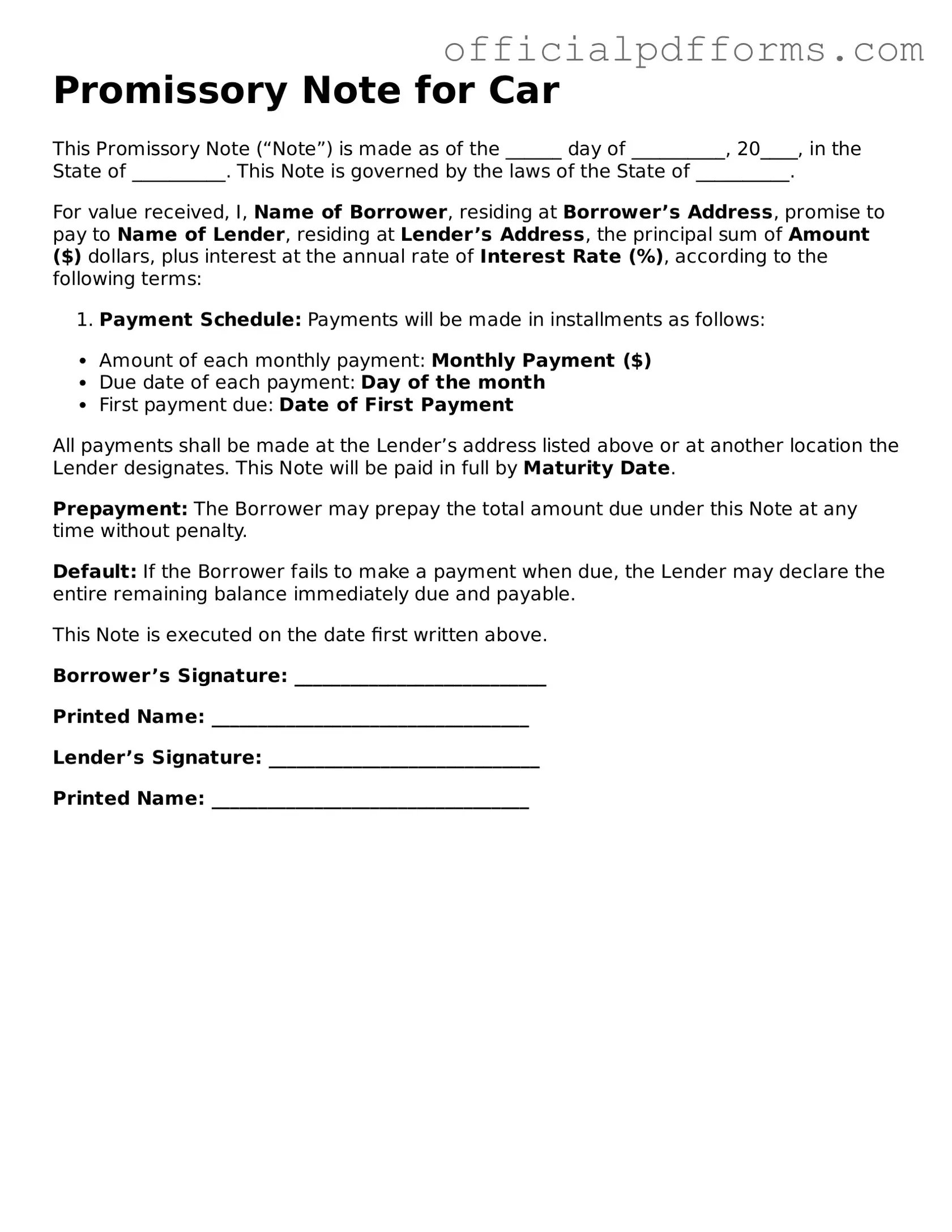What is a Promissory Note for a Car?
A Promissory Note for a Car is a legal document in which one party promises to pay a specific amount of money to another party. This note outlines the terms of the loan for purchasing a vehicle. It includes details such as the loan amount, interest rate, payment schedule, and consequences for failing to repay the loan.
Who needs a Promissory Note for a Car?
If you are borrowing money to buy a car or if you are lending money for someone to buy a car, you should use a Promissory Note. This document protects both the borrower and the lender by clearly stating the terms of the agreement.
A typical Promissory Note for a Car includes:
-
The names and addresses of the borrower and lender
-
The amount of the loan
-
The interest rate
-
The repayment schedule (monthly, bi-weekly, etc.)
-
The due date for each payment
-
Consequences of late payments or default
-
Signatures of both parties
Is a Promissory Note legally binding?
Yes, a Promissory Note is a legally binding document. Once signed, both parties are obligated to follow the terms outlined in the note. If either party fails to comply, the other party may take legal action to enforce the agreement.
Can I modify a Promissory Note after it has been signed?
Yes, modifications can be made, but both parties must agree to the changes. It’s best to document any modifications in writing and have both parties sign the updated note to avoid confusion in the future.
What happens if I default on my Promissory Note?
If you default on your Promissory Note, the lender may take several actions. They could charge late fees, report the default to credit agencies, or pursue legal action to recover the owed amount. It’s important to communicate with the lender if you are having trouble making payments.
Do I need a lawyer to create a Promissory Note for a Car?
No, you do not need a lawyer to create a Promissory Note. However, it is wise to consult with one if you have specific concerns or complex terms. Many templates are available online that can help you draft a simple note without legal assistance.
Can I use a Promissory Note for other types of loans?
Absolutely! A Promissory Note can be used for various types of loans, not just for cars. Whether it’s for personal loans, student loans, or business loans, the structure remains similar. Just ensure that all relevant terms are included.
Where can I find a template for a Promissory Note for a Car?
Templates for Promissory Notes can be found online through legal websites, document preparation services, or even local office supply stores. Make sure to choose a template that complies with your state’s laws and meets your specific needs.
